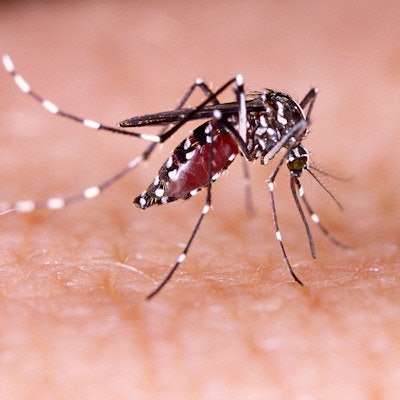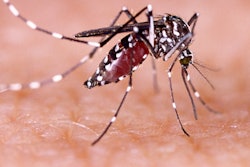
With the transmission of the Zika virus a concern in 70 countries, including the U.S., an accurate, quick, and cost-effective test is needed to see if a patient has contracted the virus. A saliva-based test may be effective, and dentists may play a key role in the future surveillance and detection of the virus, according to a study and commentary published on August 21 in the Journal of Dental Research.
Canadian and Brazilian researchers may have found an effective saliva test to detect the Zika virus. They used the saliva from a pregnant woman infected with Zika and from her twins to identify the specific protein signature of the virus. This may lead to an effective means of testing whether patients have been exposed to the virus.
"This study is exceptional in that we were able to detect Zika virus peptides in the saliva of a mother and her twin babies at 9 months postinfection," the study authors wrote (J Dent Res, August 21, 2017).
The lead author was David Zuanazzi, DDS, a doctoral candidate from Schulich Dentistry and the department of biochemistry at the Schulich School of Medicine & Dentistry at the University of Western Ontario in Canada.
International emergency
The Zika virus first spread to North America in October 2013 and was declared an international public health emergency by the World Health Organization in 2016. While the primary vehicle for its spread is the Aedes aegypti mosquito, other transmission methods include intrauterine, sexual, and blood routes. This virus is associated with birth defects, growth and developmental anomalies, and some motor neurological manifestations in adults.
Currently, blood tests are used to look for changes in a patient's RNA to diagnose Zika. However, this method can only detect the virus up to five to seven days after exposure, and after that period the test is not useful. On the other hand, saliva-based tests can detect the virus far longer after exposure.
In the current study, a 25-year-old woman in her first trimester of pregnancy was diagnosed with a Zika virus infection. She gave birth to twins six months from infection onset. One baby was diagnosed with microcephaly and the other without the condition.
Saliva samples were collected from the mother and the twins three months after the children were born. The patients had no signs and symptoms related to Zika virus infection when the saliva was collected. The researchers also collected saliva from two healthy Brazilian babies of similar age as a negative control group. They used a form of mass spectrometry to analyze all the saliva samples.
In their analysis of the samples, the researchers found a total of 423 unique Zika virus peptides in the mother, 607 in the child with microcephaly, and 183 in the child without microcephaly. However, they found no signs of Zika peptides in the saliva samples of the children in the control group.
An "extraordinary number of identified peptides" were detected in the mother's saliva at nine months following acute infection, the study authors wrote.
Positive impact
The study findings could have a positive impact globally, according to William Giannobile, DDS, DMSc, editor in chief of the Journal of Dental Research.
"This research has the potential to positively impact global health," Dr. Giannobile stated in a press release by the International Association for Dental Research (IADR). "By detecting the virus, the infected individuals can have their symptoms and the virus progression properly monitored, as well as take action to stop the spread of the virus, which causes these devastating craniofacial defects in newborns."
The researchers have received a provisional U.S. patent to develop a simple device that can be used to identify the Zika virus peptides in saliva outside of the laboratory, the IADR noted.
A key role for dentists
The main challenge of diagnosing the Zika virus is its similarity to other viruses, such as dengue and yellow fevers, according to Jaime E. Castellanos, OD, PhD, of the National University of Colombia dental school in Bogotá. Most current tests for Zika virus could also be positive in patients with dengue fever, which makes diagnosis difficult, he noted in a commentary accompanying the study.
"The strategy of detecting Zika virus peptides/proteins in unprocessed saliva samples using mass spectrometry provided a sensitive diagnostic system that, in addition to virus identification, permitted the analysis of the amino acid sequence and the possible phylogenetic relationships between the identified viruses in the trio family," Dr. Castellanos wrote.
In addition, he pointed out that the role of dentists in diagnosing the Zika virus has not been fully recognized.
"In many countries, people have closer and more frequent contact with the dentists than other healthcare providers," he wrote. "Dentists should know about the possible presence of Zika virus in blood and saliva and take appropriate precautions to prevent transmission."
When further studies validate the results of using saliva to detect the Zika virus, dentists will play an active role in developing diagnostic tests, according to Dr. Castellanos.
"Dentists are poised to make an important contribution to the surveillance and control of Zika virus and other epidemics," he noted.



















